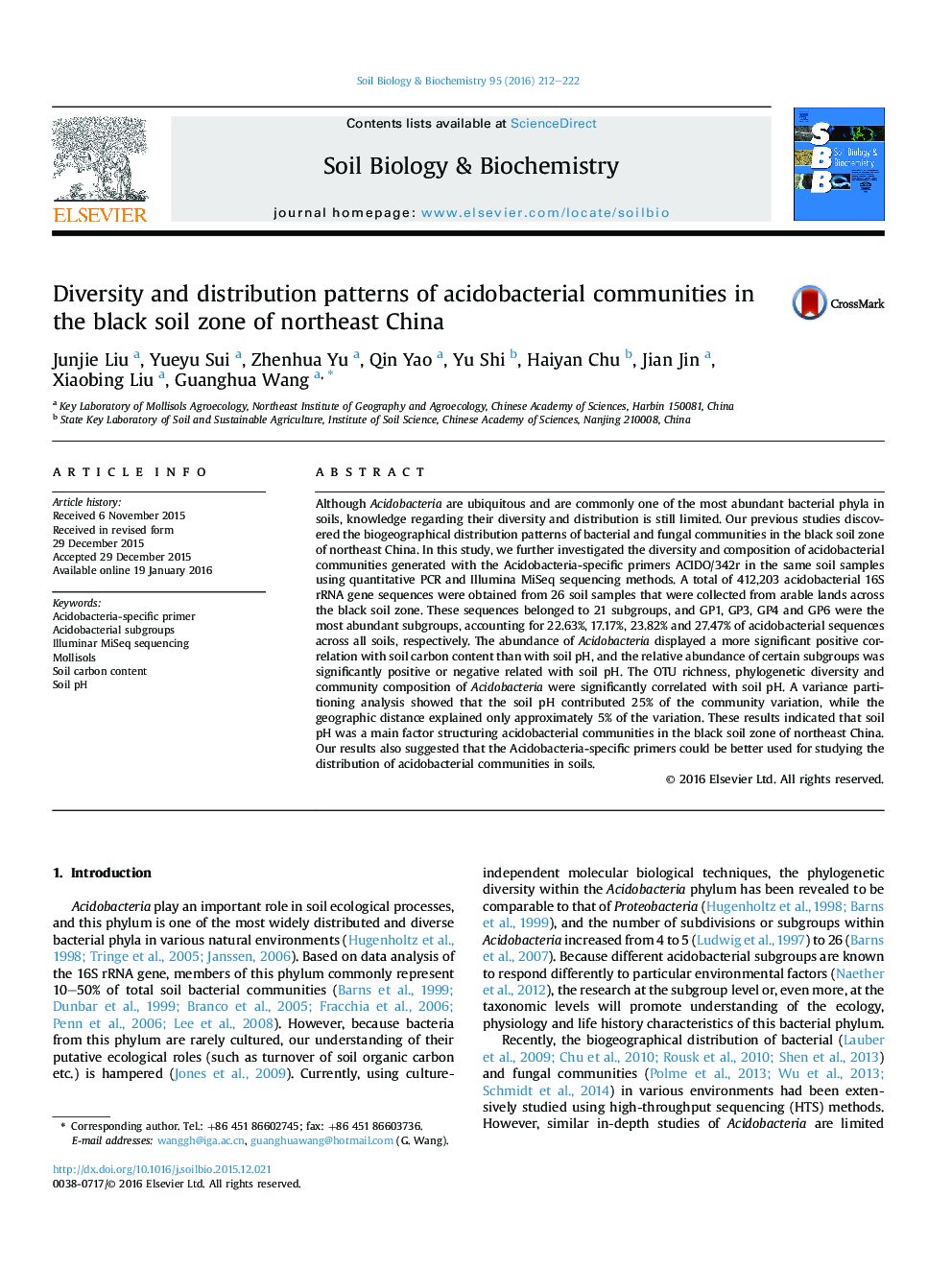| Article ID | Journal | Published Year | Pages | File Type |
|---|---|---|---|---|
| 2024281 | Soil Biology and Biochemistry | 2016 | 11 Pages |
Abstract
Although Acidobacteria are ubiquitous and are commonly one of the most abundant bacterial phyla in soils, knowledge regarding their diversity and distribution is still limited. Our previous studies discovered the biogeographical distribution patterns of bacterial and fungal communities in the black soil zone of northeast China. In this study, we further investigated the diversity and composition of acidobacterial communities generated with the Acidobacteria-specific primers ACIDO/342r in the same soil samples using quantitative PCR and Illumina MiSeq sequencing methods. A total of 412,203 acidobacterial 16S rRNA gene sequences were obtained from 26 soil samples that were collected from arable lands across the black soil zone. These sequences belonged to 21 subgroups, and GP1, GP3, GP4 and GP6 were the most abundant subgroups, accounting for 22.63%, 17.17%, 23.82% and 27.47% of acidobacterial sequences across all soils, respectively. The abundance of Acidobacteria displayed a more significant positive correlation with soil carbon content than with soil pH, and the relative abundance of certain subgroups was significantly positive or negative related with soil pH. The OTU richness, phylogenetic diversity and community composition of Acidobacteria were significantly correlated with soil pH. A variance partitioning analysis showed that the soil pH contributed 25% of the community variation, while the geographic distance explained only approximately 5% of the variation. These results indicated that soil pH was a main factor structuring acidobacterial communities in the black soil zone of northeast China. Our results also suggested that the Acidobacteria-specific primers could be better used for studying the distribution of acidobacterial communities in soils.
Keywords
Related Topics
Life Sciences
Agricultural and Biological Sciences
Soil Science
Authors
Junjie Liu, Yueyu Sui, Zhenhua Yu, Qin Yao, Yu Shi, Haiyan Chu, Jian Jin, Xiaobing Liu, Guanghua Wang,
